Create an environment for your MIDI hardware
Logic Tutorials, 02 May 2007
Learn how to access and programme your hardware MIDI device such as a synthesizer or sampler by creating a basic environment for it in Logic Pro or Logic Express.
In this Logic Cafe lesson you will learn how to set up and use a basic hardware environment for your external MIDI synthesizers, drum machinesand samplers. This lesson covers the basics which will give youthe ability to sequence your synthesizer within Logic Pro and LogicExpress.
In this example the Roland XV5050 rack mounted synthesizer module is used with eight MIDI channels enabled.
Note: Your synthesizer / sampler / drum machine will need a MIDI interface or USB connection for this lesson to work. You will also need a way of listening to your instrument eg. headphones or a mixer.
This lesson covers setting up your hardware in Logic Pro and Logic Express only. In order to set up MIDI channels in your hardware, please refer to the manufacturers handbook.
Step 1
In the arrangement page select Window>Environment from the top menu bar.
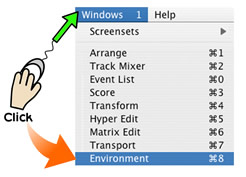
Step 2
In the environment window, click in the grey parameters box to the leftand select Create from the pull down menu. This will create anenvironment called unnamed.
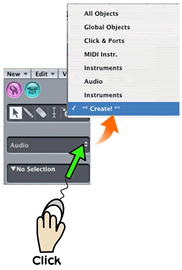
Step 3
In the newly created environment click in the grey parameters box to the left in order to rename the environment. In this example the environment is renamed Roland XV5050.
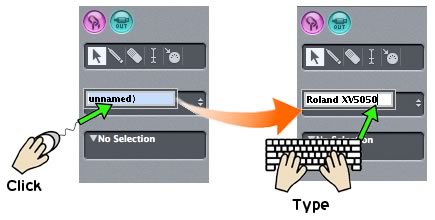
Step 4
The next step is to create a Multi instrument which will provide the MIDI channels for use in the arrange page.
In the environment window, select New>Multi Instrument from the menu bar.
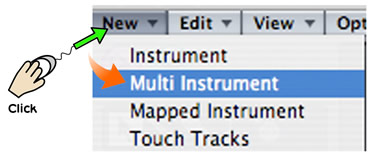
Step 5
In the grey parameters boxto the left of the environment window, click on the name of the MultiInstrument object and type in the name of your instrument. In thisexample the name Roland XV5050 is used.
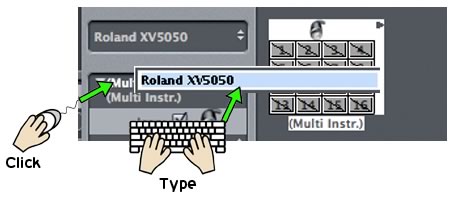
Step 6
In the environment window select New>Sequencer Input from the drop down menu. This allows your newly created Multi Instrument to talk to the sequencer engine in Logic.
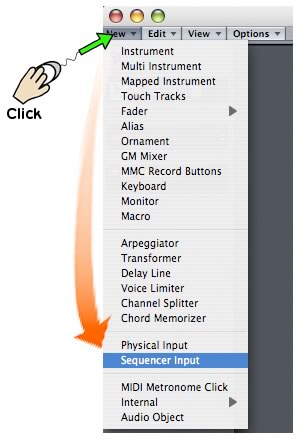
Step 7
Click on the individual numbers on the Multi Instrument object in orderto activate those MIDI channels. Repeat the process for as many MIDIchannels as you require. In this example eight MIDI channels (1-8) areactivated.
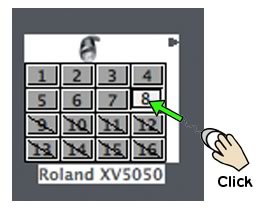
Step 8
Click on the icon at the top of the Multi Instrument object in order toselect the whole object and not just one of the channels.
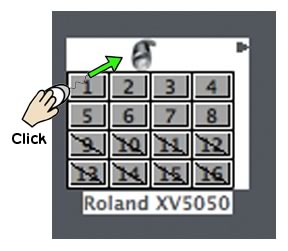
Step 9
The next step is to tell the Multi Instrument object you have created to talk to your MIDI interface or MIDI USB device. In this example the Roland XV5050 is connected to MIDI Port 1 on the Emagic MT4 USB MIDI interface.
In the environment window click in the grey parameters box and select the MIDI port which corresponds to your synthesizer, sampler or sound module.
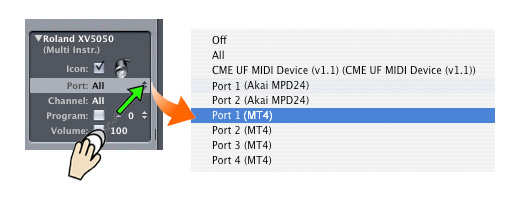
Step 9a: optional Step (Not compulsary)
If you have the icon for your particular piece of hardware, you may apply it to all of the channels by following this step:
In the grey parameters box to the left of the environment window, click on the icon picture. Select the appropriate icon for your hardware from the pop up list.
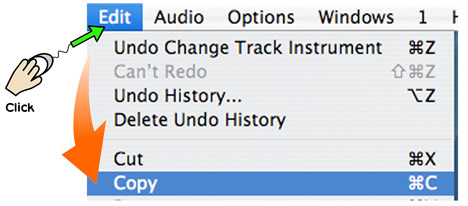
Step 10
Repeat Step 8 then in the top menu bar click on Edit>Copy

Step 11
Click on the red button in the top left-hand corner of the environment window in order to close it.
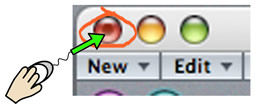
Step 12
In the Arrange Page, Double click on an empty track in order to create a new track.
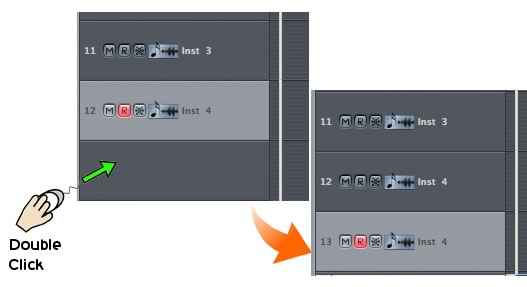
Step 13
In the top menu, click Edit>Paste.In the resulting dialogue box, click Create in order to create newtracks for the environment objects. These channels are the channels youwill select to eventually play your Multi Channel instrument.
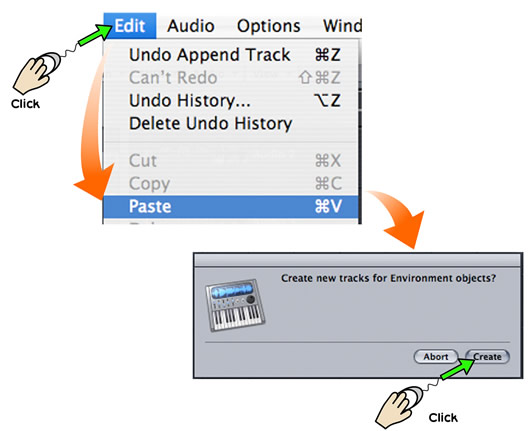
Step 14
You are now ready to play and sequence your MIDI hardwar in Logic Pro or Logic Express.
You will now need to set up the corresponding channels in your MIDIhardware. Please refer to the maufacturers handbook for instruction.
Once the hardware is set up, click on one of the MIDI channels you have created and play notes on your MIDI controller.
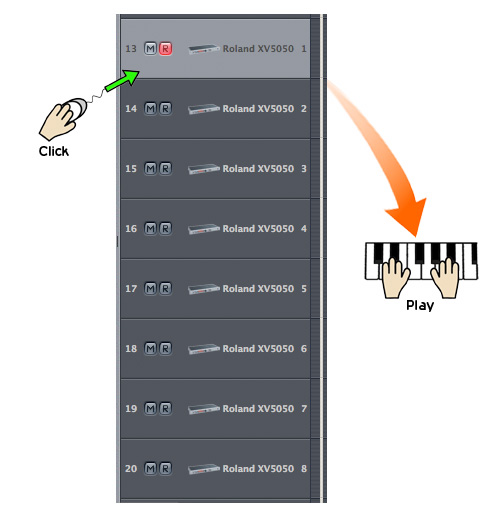
Enjoy!
By Paul Yarrow